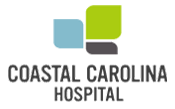Oral & Facial Pathology/Biopsy

If you notice suspicious areas in your face or in your mouth such as sores, discolorations or lumps, please make an appointment for an evaluation. Early detection and treatment of potential oral malignancies will greatly increase the success of any potential treatment. The doctors and staff at Hilton Head Oral and Maxillofacial Surgery are trained to screen for oral anomalies.
In Depth
The Oral Cancer Foundation estimates that close to 42,000 Americans will be diagnosed with oral or pharyngeal cancer this year. It will cause over 8,000 deaths, killing roughly 1 person per hour, 24 hours per day.
Research has identified a number of factors that may contribute to the development of oral cancer. In the past, those at an especially high risk of developing oral cancer were over 40 years of age, heavy drinkers and smokers.
While smoking and heavy drinking are still major risk factors, the fastest growing segment of oral cancer patients is young, healthy, nonsmoking individuals under the age of 40. Recent research has identified the human papilloma virus version 16 as being sexually transmitted between partners and related to the increasing incidence of oral cancer in young non-smoking patients. There are also links to young men and women who use conventional "smokeless" chewing or spit tobacco. Promoted by some as a safer alternative to smoking, this form of tobacco use is actually no safer when it comes to oral cancers.
Other factors that may promote oral cancer include physical trauma, infectious disease, poor oral hygiene and poor nutrition; however, the research regarding their involvement is uncertain. It is likely that there is a complex interaction of many external and internal factors that play a role in the development of oral cancer.
Perform a Self-Exam Monthly
Historically the death rate associated with this cancer is particularly high, not because it is hard to detect or diagnose, but because the cancer is often discovered late in its development.
The National Cancer Institute's SEER data indicate that when oral cancer is detected early, survival outcomes are improved and treatment-related health problems are reduced. Among healthcare professionals, your family dentist or oral and maxillofacial surgeon is in the best position to detect oral cancer during your routine dental examinations. If you are at high risk for oral cancer, you should see your general dentist or oral and maxillofacial surgeon for an annual exam.
In addition, oral and maxillofacial surgeons recommend that everyone perform an oral cancer self-exam each month. An oral examination is performed using a bright light and a mirror:
- remove any dentures
- look and feel inside the lips and the front of gums
- tilt head back to inspect and feel the roof of your mouth
- pull the cheek out to see its inside surface as well as the back of the gums
- pull out your tongue and look at all of its surfaces
- feel for lumps or enlarged lymph nodes (glands) in both sides of the neck including under the lower jaw
Early Detection and Treatment Provide a Better Chance for Cure
When performing an oral cancer self-examination, look for the following:
- white patches of the oral tissues — leukoplakia
- red patches — erythroplakia
- red and white patches — erythroleukoplakia
- a sore that fails to heal and bleeds easily
- an abnormal lump or thickening of the tissues of the mouth
- chronic sore throat or hoarseness
- difficulty in chewing or swallowing
- a mass or lump in the neck
See your oral and maxillofacial surgeon if you have any of these signs. If the oral and maxillofacial surgeon agrees that something looks suspicious, a biopsy may be recommended. A biopsy involves the removal of a piece of the suspicious tissue, which is then sent to a pathology laboratory for a microscopic examination that will accurately diagnose the problem. The biopsy report not only helps establish a diagnosis, but also enables the doctor to develop a specific plan of treatment.
A Word About Oral Care
Keep in mind that your mouth is one of your body's most important early warning systems. Don't ignore any suspicious lumps or sores. Should you discover something, make an appointment for a prompt examination. Early treatment may well be the key to complete recovery.
The information provided here is not intended as a substitute for professional medical advice, diagnosis, or treatment. It is provided to help you communicate effectively with your oral and maxillofacial surgeon. Always seek the advice of your oral and maxillofacial surgeon regarding an oral health concern.
© 2005-2013 American Association of Oral and Maxillofacial Surgeons (AAOMS). All rights reserved.
• • •











